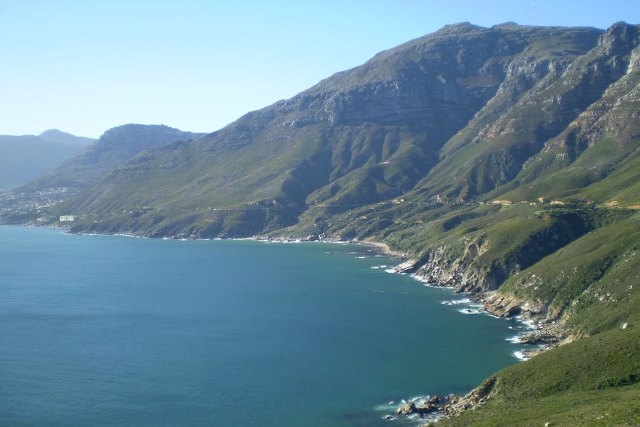31 World Heritage sites at risk from climate change : UN

TravelBizNews Desk —
New York : Some 31 natural and cultural World Heritage sites in 29 countries across the world are becoming increasingly vulnerable to the effects of climate change, a new report released by the United Nations has found.
The World Heritage and Tourism in a Changing Climate report documents climate impacts including increasing temperatures, melting glaciers, rising seas, intensifying weather events, worsening droughts and longer wildfire seasons, at iconic tourism sites such as Venice, Stonehenge and the Galapagos Islands.
It also covers other World Heritage sites such as South Africa’s Cape Floral Kingdom; the port city of Cartagena, Colombia; and Shiretoko National Park in Japan, the UN Environment Programme (UNEP) said in a press release.
“World governments, the private sector and tourists all need to coordinate their efforts to reduce carbon emissions and to protect the world’s most treasured cultural and natural resources from the impact of tourism activities,” said Elisa Tonda, head of UNEP’s Responsible Industry and Value Chains Unit.
“Policies to decouple tourism from natural resource impacts, carbon emissions and environmental harm will engage a responsible private sector and promote change in tourists’ behaviour to realize the sectors’ potential in some of the world’s most visited places,” she added.
In addition to UNEP, the report was prepared by the UN Educational, Scientific and Cultural Organization (UNESCO) and the Union of Concerned Scientists (UCS).
Because World Heritage sites must have ‘Outstanding Universal Value,’ the report recommends that the World Heritage Committee consider the risk of prospective sites becoming degraded by climate change before they add them to the list.
In particular, the report highlights the urgent need to identify the World Heritage sites that are most vulnerable to climate change, and to implement policies and provide resources to increase resilience at those sites.
In addition, the report urges increased global efforts to meet the Paris Agreementclimate change pledges in order to preserve World Heritage sites for future generations.
“Globally, we need to better understand, monitor and address climate change threats to World Heritage sites,” said Mechtild Rössler, Director of UNESCO’s World Heritage Centre. “As the report’s findings underscore, achieving the Paris Agreement’s goal of limiting global temperature rise to a level well below 2 degrees Celsius is vitally important to protecting our World Heritage for current and future generations.”
The report also recommends engaging the tourism sector in efforts to manage and protect vulnerable sites in the face of climate change, and to educate visitors about climate threats.
“Climate change is affecting World Heritage sites across the globe,” said Adam Markham, lead author of the report and Deputy Director of the Climate and Energy Program at UCS.
“Some Easter Island statues are at risk of being lost to the sea because of coastal erosion. Many of the world’s most important coral reefs, including in the islands of New Caledonia in the western Pacific, have suffered unprecedented coral bleaching linked to climate change this year. Climate change could eventually even cause some World Heritage sites to lose their status,” he added.
List of locations
Africa
Bwindi Impenetrable National Park, Uganda
Ruins of Kilwa Kisiwani and Ruins of Songo Mnara, United Republic of Tanzania
Cape Floral Region Protected Areas, South Africa
Lake Malawi National Park, Malawi
Arab world
Ouadi Qadisha (the Holy Valley) and the Forest of the Cedars of God (Horsh Arz el-Rab), Lebanon
Wadi Rum Protected Area, Jordan
Ancient Ksour of Ouadane, Chinguetti, Tichitt and Oualata, Mauritania
Asia and the Pacific
Rock Islands Southern Lagoon, Palau
Hoi An Ancient Town, Vietnam
Shiretoko, Japan
Komodo National Park, Indonesia
Sagarmatha National Park, Nepal
Lagoons of New Caledonia: Reef Diversity and Associated Ecosystems (France)
Rice Terraces of the Philippine Cordilleras, Philippines
Golden Mountains of Altai, Russian Federation
East Rennell, Solomon Islands
North America
Yellowstone National Park, United States of America
Statue of Liberty, United States of America
Old Town Lunenburg, Canada
Mesa Verde National Park, United States of America
Latin America
Port, Fortresses and Group of Monuments, Cartagena, Colombia
Coro and its Port, Venezuela
Galápagos Islands, Ecuador
Huascarán National Park, Peru
Atlantic Forest South-East Reserves, Brazil
Rapa Nui National Park (Easter Island), Chile
Europe
Ilulissat Icefjord (Greenland), Denmark
Heart of Neolithic Orkney, United Kingdom of Great Britain and Northern Ireland; Stonehenge, Avebury and Associated Sites, United Kingdom of Great Britain and Northern Ireland
Wadden Sea, Netherlands, Germany and Denmark
Venice and its Lagoon, Italy
Source : un.org May 31, 2016














